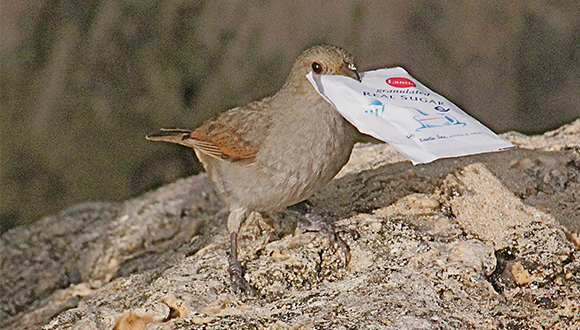Birds provide us with the clues to understanding human creativity
An analysis of 1018 bird species led by CREAF and CSIC scientists suggests that innovation is not just an adaptation on it own, but emerges with the combination of certain adaptations which developed for dealing with changes in the environment, including having a large brain and being curious. Primates, cetaceans, parrots, and crows innovate because they have long lifespans and are adapted to living in changing environments.

Animals innovate when they have to respond to new problems that they have never encountered before. For this reason it is unlikely that this ability could have evolved on its own through natural selection. If the capacity for innovation wasn’t selected directly, how could it have evolved? An article recently published in the journal Philosophical Transactions of the Royal Society suggests that the ability to innovate wasn’t selected directly but rather that it emerges when different adaptations for other purposes are combined, such as having a large brain, being curious enough to explore the environment, and having extremities which allow manipulation of objects. When these features are combined, the animal acquires the ability to solve problems by innovating.
The ability to innovate wasn’t selected directly but rather that it emerges when different adaptations for other purposes are combined.
This new theory would explain a number of surprising observations. For instance, it is known that species that have never used tools in their natural wild state, such as rooks, show a surprising ability to use them in the laboratory when they are presented with the problem of taking food out of a tube. This reinforces the idea that the ability to innovate, depending on a combination of adaptations which have emerged for other reasons, is already present in some animals even when they don’t use it in nature.
In order to innovate it is important to have a long life and live in a changing environment
Although it was previously thought that creativity was an exclusively human characteristic, today we know that it is also found in many other animals, principally primates, cetaceans, parrots, and crows. Why did these adaptations evolve together in such animals? The study led by CREAF and CSIC researchers proposes that the adaptations necessary for innovation are a part of the life-history strategy of some species that frequently encounter environmental changes.
The bird species with the greatest capacity for innovation tend to have two principal characteristics: a capacity for long lives, and a generalist ecology.
Analyzing information of 1018 bird species, the researchers discovered that the bird species with the greatest capacity for innovation tend to have two principal characteristics: a capacity for long lives, and a generalist ecology. Animals with long lives not only have more time to innovate, but it is also more likely that they encounter new challenges during their lives. Also, innovations will have greater value because each new behavior can be used over a longer amount of time in the future.
Adding to all of this is the fact that a long life allows the delay of development, giving sufficient time for the development of large brains, a requisite for excelling in creativity. Being a generalist, on the other hand, frequently exposes an individual to new challenges such has having to find new foods, and this requires capacities such as exploration, discrimination, manipulation, and memory. Animals with specialized requirements don’t need these adaptations, which ends up limiting their innovative capacity.
ARTICLE:
Sol, D., Sayol, F., Ducatez, S., & Lefebvre, L. The life-history basis of behavioural innovations. (2016) Phil. Trans. R. Soc. B. DOI: 371(1690), 20150187







